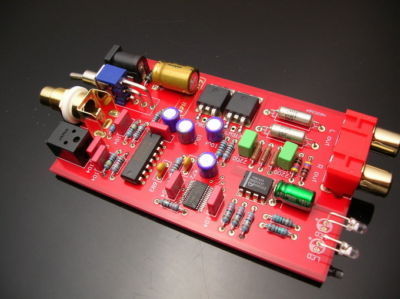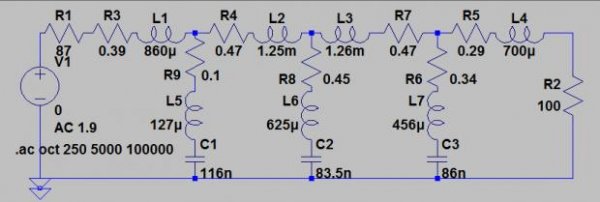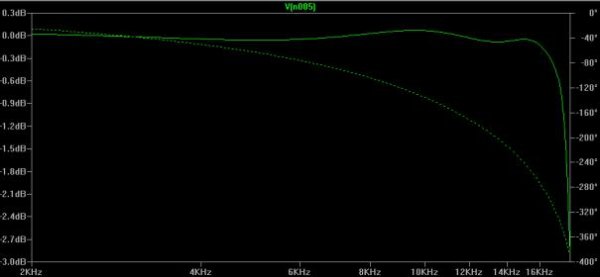All the titles you mentioned are great "remasters".
I take it that the scare quotes are there to indicate pure marketing - you know, like 'Pepsi Max' as against 'Diet Pepsi' ? But you couldn't possibly comment
All the titles you mentioned are great "remasters".
I take it that the scare quotes are there to indicate pure marketing - you know, like 'Pepsi Max' as against 'Diet Pepsi' ? But you couldn't possibly comment
Oooofff...talk about dead on arrival! It did make me think when isolation/shielding guys started to enter the digital world. nevertheless, always curious to hear, though not inclined to chase.

PM said that it sounds different on different transports and with different cables - which means they haven't isolated it well enough from common-mode noise effects and jitter. Which at 11k5 UKP you'd think they had the budget to lick totally, taking no prisoners...
I've just finished Alan Sircom's review and resonate with his subjective experiences about sound the NOS DACs. However he omits to point out that the experience can be had at a considerably lower price (we're talking $32) with one of these. This is where I started out on NOS nirvana : http://www.ebay.com/itm/High-end-DA..._Audio_Amplifiers_Preamps&hash=item2c656fac2b
View attachment 6930
which Alan Sircom article is this? if you can let us know, i'd like to read it.
which Alan Sircom article is this? if you can let us know, i'd like to read it.
Its a link on the page you originally drew our attention to, here : http://aletheia-audio.com/wp-content/uploads/2012/07/hifi85-dac-1-review-5.pdf
interesting...particularly since isolation was supposedly one of their key selling points!
Yes, the ironies keep piling up don't they? According to what I read, there's some EMI/RFI shielding material on the inside of the case. It won't do much good because the primary route for noise to enter is via the connecting cables. Elementary error to make for someone not really up to speed on EMC...
does that meant the best way to shield for the entering connecting cable...is to shield the cable?
No, that's only part of the solution. A shielded cable can still carry noise from an 'aggressor' source component into a 'victim' component. Noise has to be filtered from the cable itself once inside the box. Feedthrough capacitors are used by those who know what they're doing, but the box then does have to be a total faraday screen, something I've never seen in any audio product but is routine in RF stuff.


Back to the elliptic filter - I have now put in the actual losses from the inductors I wound for the first prototype (in the picture) and as a result the FR shifted a bit. LTSpice doesn't simulate real inductor losses so the resistors in series do that, and the resistors here are what I measured as the inductor losses on my LCR meter at 20kHz. They're frequency dependent so I chose 20kHz as the worst case. I've now tweaked some values in an attempt to flatten out the response. Here's the revised schematic :
View attachment 6949
Here's the passband FR: -3dB just a whisker over 18kHz:
View attachment 6950
The typical NOS DAC starts drooping well before that frequency - 5kHz is where the roll-off begins if you eyeball the FR. But this isn't a typical NOS DAC as I have a trick for compensating that roll-off. I do it by adding in small delayed contributions from other DACs - with 1 and 2 sample delay relative to the main DAC. This forms a DAC-filter hybrid. The FR you commented on is just for the DAC's post-filter - its acting to soak up glitches and eliminate image frequencies.
Yes, the normal NOS has a roll-off which eventually reaches more than 3dB by 20kHz. Its not so much this amount at the top end that I think I hear, more the HF energy gradually being reduced the two octaves beneath 20kHz. I was very happy without correcting it for a long time as I was so enamoured of the NOS sound. Then one day I put this correction in and I realized what I'd been missing, so now I can't go back to uncorrected NOS. Nor could we persuade the more die-hard of the objectivists to try it with such FR colourationThey might still object that it doesn't give them the full response up to 20kHz though, my correction is only reasonably accurate up to around 17kHz although I could always add more DACs and more delays to improve it further.
There are two other ways to correct for this NOS roll-off (or droop as I call it), neither of which I like. The first is to do digital processing, but then some dynamic range is lost as I have only 16bit DACs. The second is to implement an analog boost filter - however I don't think this can be done without further boosting the image frequencies which potentially cause tweeter IMD. This approach I have tried - it calls for a fairly high Q LC tank circuit.
| Steve Williams Site Founder | Site Owner | Administrator | Ron Resnick Site Owner | Administrator | Julian (The Fixer) Website Build | Marketing Managersing |

